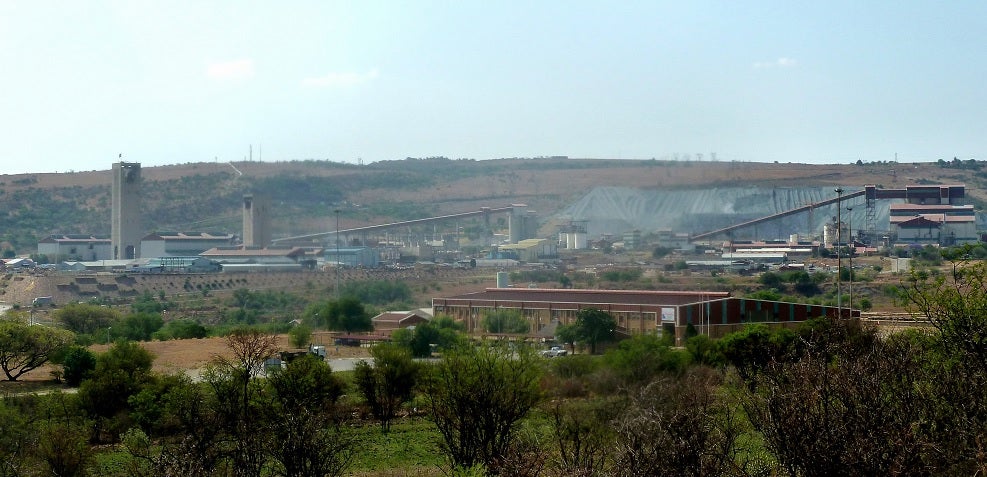
The deepest mine in the world could soon be changing hands. AngloGold Ashanti has made its intentions to sell the Mponeng gold mine in South Africa clear, despite the project posting an 18% increase in production between 2017 and 2018, and the company’s quarterly results showing the mine on track to produce around 360,000 ounces of gold this year, a significant improvement over the 265,000 produced in 2018.
However, with the miner’s debts mounting and recent changes at the top of its corporate structure, the company’s flagship project is looking increasingly like a figurehead of past mining success, rather than the future of AngloGold.
Colossal in size and scope
The mine’s statistics are stunning. The project stretches two and a half miles below the Earth’s surface, making it the world’s deepest man-made hole, and its chambers and passages are connected by 236 miles of tunnels, just 14 miles short of London’s Underground network. Miners typically work at an average depth of between 2.8km and 3.4km below the surface, extracting gold from ore with grades of over 8 grams per tonne, making the mine of the most lucrative in the world.
The mine was named the tenth-largest gold project in the world in 2013, following production of 532,000 ounces of gold in 2010, and 405,000 ounces two years later, making the mine one of the world’s most productive.
Most of the work done at the mine has been at the Ventersdorp Contact Reef (VCR), which had depleted the reef’s reserves to 2.05 million tonnes by 2010. However, AngloGold Ashanti has long considered expanded work at the Carbon Leader Reef (CLR) deeper beneath the surface, which has probable reserves of 22.52 million tonnes. The latter reef also has a higher grade of gold, reaching 11.3 grams per tonne, compared to 8.9 at the VCR.
AngloGold Ashanti had planned to invest considerably into further expansion work at the mine, including the raising of boring of the reef pass and work on wall infrastructure, but many of these projects have been suspended or cancelled as the company aims to cut costs and sell projects.
Declining production and alternative projects
There are a number of reasons for the decline of the Mponeng project, led by declining production at the mine. Gold production fell from 315,000 ounces in 2017 to just 265,000 ounces in 2018, underpinning a collapse in gold production across AngloGold Ashanti’s operations from 3.7 million ounces to 3.4 million ounces across the same period.
The mine has been left in an awkward middle ground between the VCR, which has become too depleted to be a profitable source of gold, and the CLR, which is still too deep and remote to be mined immediately. Reaching the CLR would require significant investment, the costs of which are no longer covered by the mine’s production, with JP Morgan reporting in April that AngloGold Ashanti would have to invest around $1bn to extend the mine’s life beyond 2027.
This has led to a fall in the number of workers employed at the mine, with more than half of Mponeng’s employees leaving the project between 2016 and 2018, and contract workers in particular struggling to find jobs at the company, with the number of contract-based roles collapsing from 864 to 363 in this period.
This decline also casts somewhat discredits the effectiveness of the company’s safety initiatives at the site; while the number of fatalities has fallen from five in 2016 to just one in 2018, the number of injuries has actually increased over this period, from 15.4 injuries per million hours worked to 17.1 incidents. While the number of incidents may be in decline due to a smaller working population, those that still work at the mine could be facing a higher occupational risk than their predecessors.
Ultimately, these setbacks have had further effects on future developments at the mine, with the construction of new water management infrastructure behind schedule, and a project to extend the life of the mine suspended indefinitely due to a lack of funding. Corporate changes have also cast doubt over the mine’s future, with new CEO Kelvin Dushnisky looking to sell its flagship operation within a year of his rise to the position.
While Harmony Gold and Sibanye-Stillwater have been touted as possible buyers, the former is already struggling to fund its half of the Wafi-Golpu project in Papua New Guinea, while the latter is reeling from a miners’ strike and has debt concerns of its own, leading to an uncertain future for the Mponeng project.



